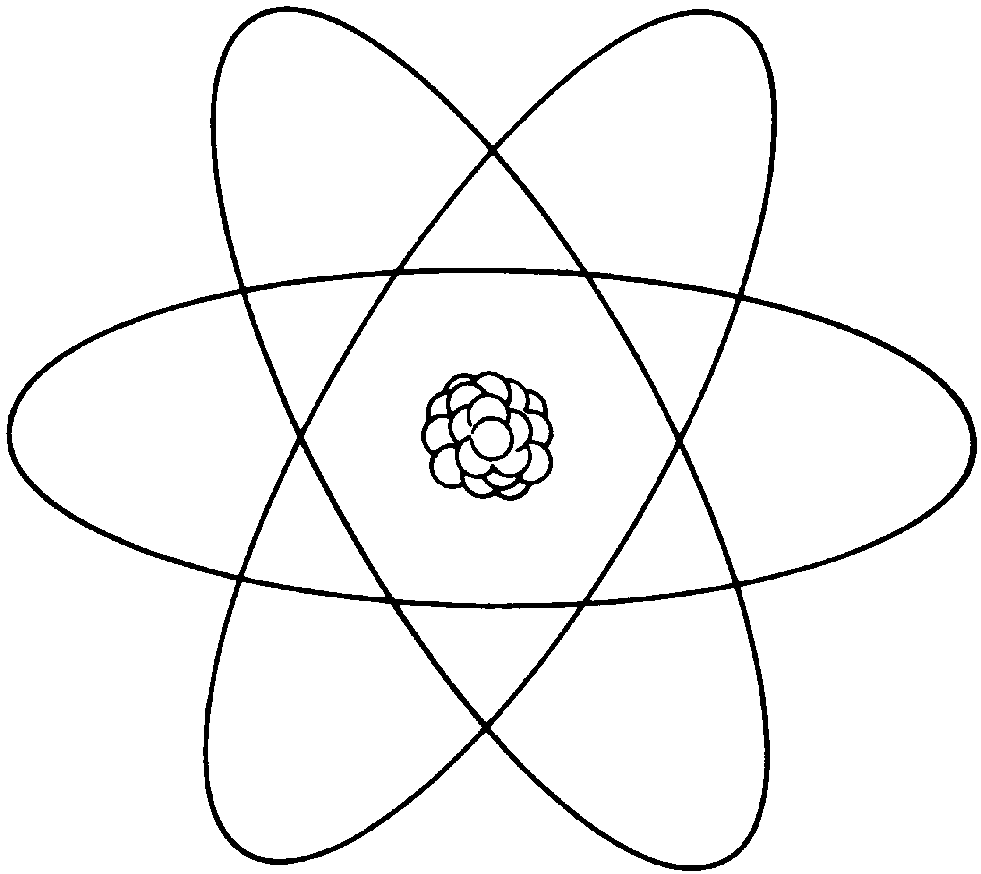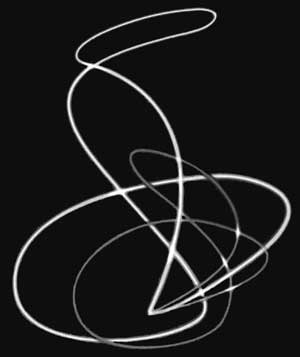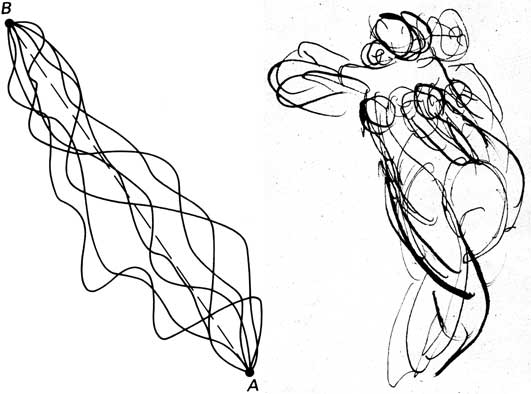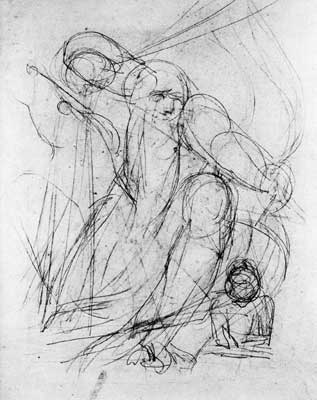
Ammonius Saccas and his disciples . . . [were] called Analogeticists. . . . because of their practice of interpreting all sacred legends and narratives, myths and mysteries, by a rule or principle of analogy and correspondence: so that events which were related as having occurred in the external world were regarded as expressing operations and experiences of the human soul. — H. P. Blavatsky
What I call theophysics concerns the line-paths, circulating fields, and planes of matter, spirit, and the infinitely subtle, elusive stuff of consciousness itself. It is about the all-scaled, mindfully-creative intermingling of crystalline, translucent, and opaque worlds of cosmic matter and its activity and growth. In these fluidic worlds, as a mahatma once stated, "the only eternal and uncreated Deity that we are able to recognise" is "the universal perpetual motion which never ceases, never slackens nor increases its speed . . . but goes on like a mill set in motion," simply because "It is the peculiar faculty of the involuntary power of the infinite mind [consciousness] . . . to be eternally evolving subjective matter into objective atoms . . . or cosmic matter to be later on developed into form" (The Mahatma Letters to A. P. Sinnett, p. 138 — italics added).
Many ancient traditions recognized the gestalt reality of atomic matter. To the Jains of India, even the smallest particle of matter is a jiva, a life-atom or being. Indeed we ourselves are jivas (sentient, spiritual atoms) that circulate in and through the cosmic organism. Pointing to the relationship of micro, human, and macro scales, the Jains believe that an omniscient seer or saint
can actually watch the process of unending metabolism taking place throughout the frame, observing the cells in their continual transmutations; for his individual consciousness has been broadened to such a degree that it corresponds to the infinite consciousness of the giant universal being. With his inward spiritual eye he beholds the life-atoms, infinite in number, circulating continually, each endowed with its own life-duration, bodily strength, and breathing power, as it goes about perpetually inhaling and exhaling. — Heinrich Zimmer, The Philosophies of India, pp. 276-7
— cyclically re-creating in the ultimate interactive art of arts, called Life.
Our imaginations are called upon daily — even momentarily — to engineer and renew their pictures of dear life. This innate art form is as natural as our eye beholding an arch in ruins and of itself completing the missing airy curve. This activity is the divine root of our elemental urge for visual clarity and affirmation, and constitutes the fundamentals of an evolutionary "art-algebra" — the creation mechanics for our seeking, learning, expressive human spirit.
Interestingly, physicist Erwin Schrodinger believed that "the goal of atomic physics is to create images of the interior of the atom that appeal to our intuition and make sense in terms of ordinary experience"; but he was never able to interpret his theory visually as effectively as Bohr did with his "nifty, though obsolete icon" — the universal picture of three oval orbits around a nucleus.

Actually, the orbit of an electron is indeterminate — blurry, fuzzy, and roundabout. Yet in higher macro-scales these fields of transformational probability do round out to combine into our familiar gyroscopic world.
Notable is the Rydberg atom, in which the outermost electron has an immensely large orbit which is not limited to an ellipse: "Its path can be simple or extremely complex; it can trace a regular pattern or degenerate into utter chaos" (Hans Christian von Baeyer, "The Philosopher's Atom," Discover Magazine, Nov. 1995, p. 108).

Analogically this atom is a natural line-path or bridge to the imagination because it is known to shuffle amazingly between two different spheres of activity: the quantum world of uncertainty and our macro-world of predictability with its idealized models. Dr. von Baeyer tells us that "When the outer electron in a Rydberg atom leaves the nucleus on its long, loopy orbit, it stops behaving like a creature of quantum mechanics. Instead it acts more like your garden-variety baseball, galaxy or molecule." But on its return this same electron
behaves like an atomic amphibian, as it were, sprinting along the firm ground of classical mechanics before it plunges back into the swirling waves of quantum mechanics.
. . .
According to quantum mechanics, the electron leaves the Rydberg atom as a smooth spherical wave but encounters itself on its way back, this time as an irregular spherical wave. The resulting interference pattern determines what trajectories [lines or paths] the electron can take.
. . .
One of the most stubborn enigmas of modern physics is neatly summarized by playwright Tom Stoppard in his spy drama Hapgood: "There is a straight ladder from the atom to the grain of sand, and the only real mystery is the missing rung. Below it, particle physics. Above it, classical physics. But in between, metaphysics." — "The Philosopher's Atom," pp. 105, 107, 102
On the human scale, this telltale atom can be likened to the mind and hand of an artist (quantum mind/classical hand — the uncertain creative mind, and the forecasting creative hand). Together their workings can be visualized in terms of Richard Feynman's "sum over histories," a mathematical model of interacting waves forming interference patterns. Combining theophysics and quantum field theory, we can explore how the mind or imagination knows which is the most direct way to create a line drawing, "field" painting, or a simple/complex sculpture:
The particle [or artist] simultaneously `feels out' all possible paths between A and B. Because of the wavelike nature of quantum matter, destructive interference causes wave cancellation everywhere except in the region of the straight path (broken line). — Paul Davies, Superforce, p. 235

Or, for the artist, because of the wavelike nature of quantum thought in his or her mind, destructive interference causes line or wave cancellation everywhere except in the region or axis of the final path of the artist's vision. Above, side by side, are an example of Feynman's "sum over histories" and George Romney's figure drawing titled "Charity." Surprisingly, it looks like Romney's hand parallels the full ranges of probability from quantum mechanics to creation mechanics!
Such creative "sum over histories" coax virtually all probable outcomes of definitive life between divine ideas and their transition into our plane and horizon of perception (sometimes referred to by quantum philosophers as the "collapse of the wave function"). This complexity of simultaneous activity is elusive at the micro level, transforming at the human level, and oh-so-satisfying at the loftiest level, as an idea's quasi-unpredictability wends, waves, and creates its way into newly evolved forms and comprehensible pictures of life as we normally see them.

Like complex imagery caught in modern bubble or cloud chamber experiments, see how William Blake's quantum-mind and creative electron-hand imagines, finds, and then calculates something into being. This process is borne in his sketch Time's Triple Bow. Blake the harbinger has penned in word and image his intuitive grasp of both physics and Natural Religion: "Man's perceptions are not bounded by organs of perception; he perceives more than sense (tho' ever so acute) can discover . . . he has in fact the power of spiritual perception. . . . man's desire is for the life of the spirit — `less than All cannot satisfy Man' "(J. G. Davies, The Theology of William Blake (1948), p. 25). Further, in his America a Prophecy he dutifully takes dictation from his whispering inner voice: "every thing is holy, life delights in life."
Blake, like the Jains and so many others in the irrevocable past, were consummate visionaries and compassionate theophysicists; compassionate because they wholeheartedly created for us wondrous visual analogies of the divine, creative forces and faculties of atoms and men arising from the perpetual activity of infinite mind and universal being.
(From Sunrise magazine, December 2001/January 2002; copyright © 2001 Theosophical University Press)